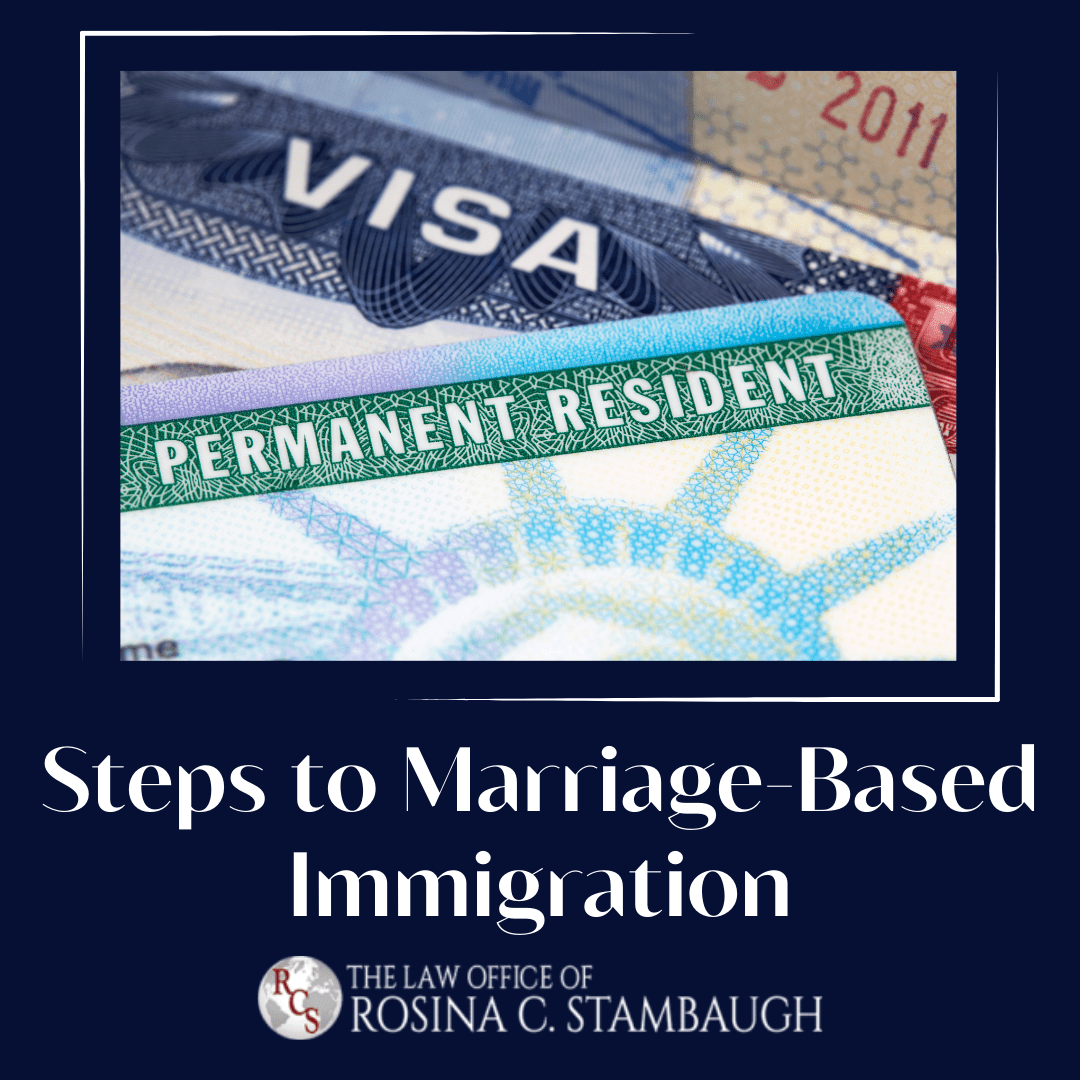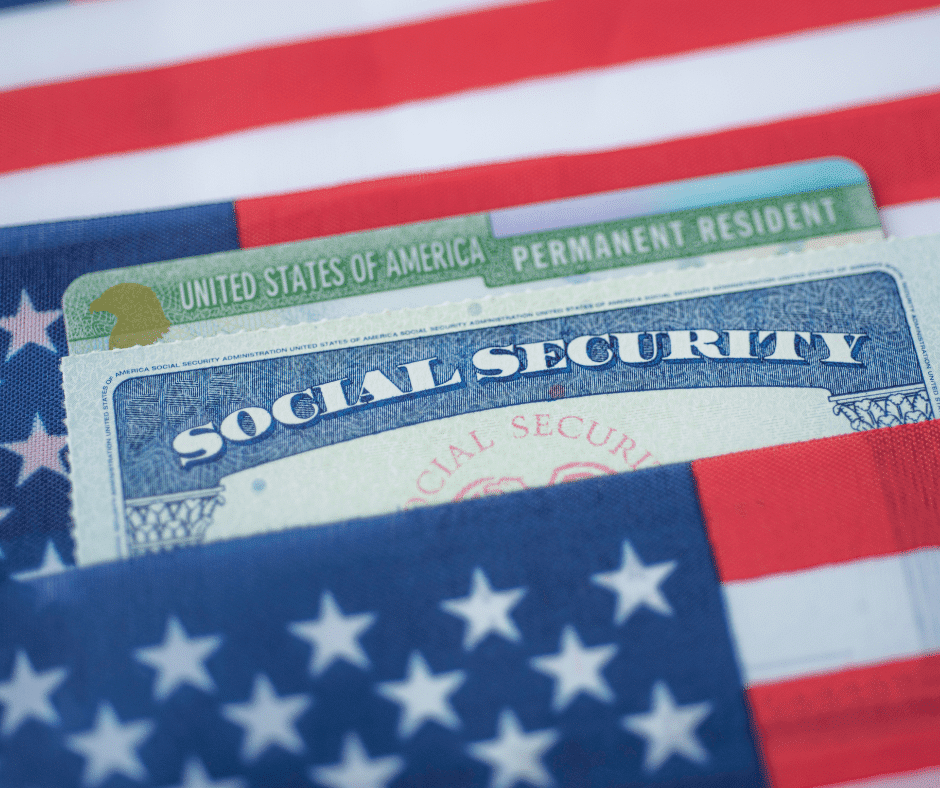Marriage is one of the quickest ways to qualify for a green card in the U.S. Yet, getting your green card through marriage comes with many potential frustrations and delays. The marriage green card timeline is longer than many expect, taking one to two years on average.
Getting a marriage-based green card can be stressful, but being able to live together with your spouse makes it worthwhile. If you need help applying for a green card through marriage, The Law Office of Rosina C. Stambaugh can help. Helping immigrants navigate U.S. immigration law is our passion.
Who Can Get a Green Card Through Marriage?
A noncitizen can get a green card through marriage to a U.S. citizen or a lawful permanent resident (LPR). U.S. law limits the number of green cards it issues each year based on marriage to an LPR, so marriage to a U.S. citizen is the more common path.
When a U.S. citizen applies for a green card on their spouse’s behalf, they request an “immediate relative” immigrant visa. When an LPR applies for a green card on their spouse’s behalf, they request a preference-based F2A visa.
What Are the Steps to Marriage-Based Immigration?
The steps to get your green card in hand vary based on whether you apply from within or outside the U.S. If you apply for a green card while already in the U.S., you apply to “adjust status.” If you apply while living outside the U.S., you get your green card through “consular processing.”
Along with whether you are requesting an immediate relative or F2A visa, where you apply is the largest factor affecting how long after marriage it takes to get a green card.
However, both paths typically start with your spouse submitting a Form I-130, Petition for Alien Relative, to United States Citizenship and Immigration Services (USCIS). If your spouse is abusive, you can sometimes petition on your own behalf using Form I-360, Petition for Amerasian, Widow(er), or Special Immigrant. Note that the U.S. considers marrying someone to get a green card immigration fraud and carefully vets green card applications based on marriage.

Form I-130
When you submit Form I-130, you ask USCIS to determine that you qualify for a green card. Along with your completed Form I-130, you should submit proof of the following:
- Your identity,
- Your spouse is a U.S. citizen or LPR,
- You and your spouse are married, and
- Your marriage is legitimate.
USCIS calls proof that your marriage is genuine “the bona fides of marriage,” which often includes documents showing that you and your spouse:
- Live together,
- Have intermingled finances, or
- Have children together.
In addition, many couples submit affidavits from people who know them as a couple.
Adjusting Your Status
If you are in the U.S., you request a green card by submitting Form I-485, Application to Register Permanent Residence or Adjust Status. Noncitizens applying for an immediate relative visa can generally submit Forms I-485 and I-130 simultaneously. Noncitizens applying for an F2A visa must usually wait until a visa is available.
You and your spouse will next attend an interview with a USCIS officer. Most of the interview questions involve the legitimacy of the marriage and your identity. If the interview goes well, you should receive a green card within a few days to weeks.
Consular Processing
If you are outside of the U.S., you obtain a green card by submitting Form DS-260, Immigrant Visa Electronic Application, and attending an interview with your spouse. After USCIS approves your Form I-130 submission, you will have the interview at a U.S. consulate abroad. Again, the interviewer will confirm both of your identities and the legitimacy of your marriage.
If the officer concludes you qualify for a green card, the consulate will issue documents authorizing you to travel to the U.S. Once you get to the U.S., you bring your approvals from USCIS and the consulate to Customs and Border Protection (CBP), which should issue you a green card. However, CBP can refuse to issue a green card if it determines you do not qualify.
What Is the Green Card Timeline?
USCIS allows you to check average processing times for different USCIS forms. This allows you to see how long you should expect to wait for your green card.
Immediate Relative Visas
If you are adjusting your status and submitting Form I-485 with Form I-130 or I-360, you only need to consult the I-485 processing time page. Processing speed varies by office. For example, I-485s submitted to Portland, OR, are taking approximately 17 months, while those submitted to Portland, ME, are taking approximately 13.5 months.
If you go through a consulate, how long it takes to get your green card depends on how soon the consulate can schedule your interview. Consulates may take a few weeks to more than a year to process your application.
F2A Visas
Approximately 80,000 F2A visas can be issued per year, and this limitation results in processing backlogs. As of February 2024, it is taking approximately three years to issue an F2A visa.
Looking for Trusted Green Card Assistance After Marriage? Call Now!
Getting a green card should be an exciting event. However, the complexities of U.S. immigration law often turn a positive event into a stress-filled marathon. If you are considering applying for a green card based on marriage, reach out to the Law Office of Rosina C. Stambaugh today.





